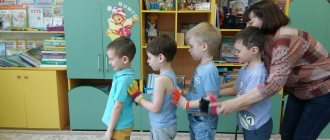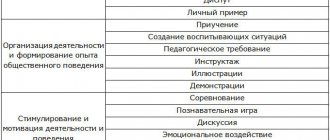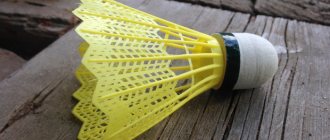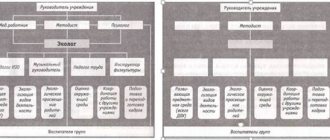Regional component in additional education - relevance and prospects (from work experience)
Author: Denisova Olga Leonidovna
Regional component in additional education – relevance and prospects (from work experience)
The Law “On Education” establishes two components of the standard – federal and national-regional.
National-regional component
provides for the possibility of introducing content related to the traditions of the region. It meets the needs and interests of the peoples of our country and allows us to organize classes aimed at studying the natural, sociocultural and economic characteristics of the region, the national (native) language and national literature.
The regional component is an integral part of education. The tasks of the regional component include the formation in each child of a system of knowledge about the uniqueness of their native land, familiarization with the wealth of folk culture, artistic traditions, and familiarization with folk art.
In our institution, the regional component appeared in 2000 and included educational content directly related to national, regional and local socio-cultural factors.
As the head of the children’s association “Faceless Doll”, in the process of practical activities in her educational program “Doll from Grandma’s Chest”, she identified the following points of the regional component that contribute to the formation in children of love not only for the world around them, but also respect for the traditions and way of life of that territory where they live.
-residence in the Krasnovishersky district of Komi-Yazvintsev;
- literary works about the native land
— project activities
Komi-Yazvintsy
There are only two thousand people on the globe who consider themselves Komi-Yazvin Permians. They all live here in the Krasnovishersky district in the villages of Antipina, Parshakova, Vankova and Verkh-Yazva. They are distinguished from the Komi-Permyaks not only by their habitat and faith (they are all Old Believers), but also by their language. This was noticed by the teacher of the native language of the Parshakovsky secondary school, Anna Lazarevna PARSHAKOVA, author of the Komi-Yazva primer. In addition to historical information about the Komi-Yazva people, we talk about traditions and customs, including the Sarchik holiday, a holiday to welcome spring, dedicated to Nikolin's day on May 22, and make a doll The bird, saying “Sarchik has flown in, bringing spring on his tail.”
The works of Vika Korzhimanova, 8 years old Sarchik, Polina Podvintseva Bird Joy took part in the regional talent competition of the Kama region.
Literary creativity about the native land
Many literary works have been written about the Vishera region
History teacher at school No. 4 Igor Vladimirovich Yakovlev is the author of the book “At the Ancient Rocks.” Igor Vladimirovich collected legends and stories about the natural monuments of the Vishera region. After reading the book, the children made panels from salt dough. The work of Anna Novikova, 9 years old, took part in the regional exhibition dedicated to the anniversary of Krasnovishersk and the regional talent competition of the Kama region.
Since 2011, she began to use the project method in her activities. Our projects are educational. They are spelled out in the educational program.
The peculiarity of our educational projects is that these projects are COLLECTIVE, that is, all children of the children's association work on the project at the same time (1st, 2nd and 3rd year of study). The difference is that the degree of complexity of the work being performed increases, and different materials and techniques are used.
In my educational program there are 3 educational projects - “Mother’s Day”, “Christmas”, “Holy Easter”. When creating projects, children not only enrich their knowledge and skills, but also develop artistic taste and creative thinking, because... create decorative items according to their own design. When working on the creative project “Mother’s Day,” children independently study the history of the holiday in Russia, compose small collections of songs and poems about mothers, write essays, draw portraits of their mothers, and make a doll-amulet “Nurse - a symbol of motherhood.” Sergei Meshurov presented at the school conference the result of the collective work of the 1st year group on the topic “The nurse doll is a symbol of motherhood.” Ekaterina Belkova created her own image of the “Kuvatki” doll with a fluffy headdress, different from the well-known ones. The results of the project are presented by children in the form of presentations, wall newspapers, and booklets. We definitely hold a holiday for mothers, read poems to them, congratulate them, and give gifts made with our own hands.
Easter is a bright spring holiday, when you want to give something to your loved ones. As such gifts, we make Easter souvenirs: eggs made of cardboard, covered with light fabric, framed with lace, braid and satin ribbons, with Christian symbols, baskets and egg stands made of paper, twine, magnets - we give freedom to creativity, but be sure to follow the rules compositions and learning to work with color. We discuss with the children that there is a long fast before Easter, what it is and what it is for. Children choose the topics of small studies themselves: the history of the Easter holiday, the recipe for Easter cake in my family, the traditions and customs of Easter, etc.. Children are happy to make a secret box-chest at home, where they put the gifts they have made so that they can be given on Easter Day . All this takes place within the framework of the educational project “Bright Easter”. A game program with Easter eggs is a must. Children are surprised to learn that there was a game called “Egg Rolling”, where the prize-gift was another egg or some kind of souvenir that was won. This year, for the first time, a small charity event was held within the framework of this project. The children made a toy “Bunny on a finger” and the toys were presented to the kids.
Work on the “Nativity of Christ” project begins with an acquaintance with the mythological roots of the folk peasant calendar, rituals that are partially observed in our time. Children enjoy looking for and learning carols and making “Angel”, “Kolyada”, and “Goat” dolls. The implementation of the project has its results.
One of the priority tasks facing modern education is to teach to appreciate, preserve and develop the rich history and culture of the peoples of Russia, because world historical experience shows that the loss of language, cultural and national characteristics is tantamount not only to the loss of one’s past, but also to deprivation of one’s future . Regionalization is one of the strategic directions for the development of education in our country.
Thus, we can conclude that additional education, going hand in hand with basic education, helps develop the child’s personality
-loving his land and his Fatherland, knowing Russian and his native language, respecting his people, their culture and spiritual traditions.
Attached files: comments powered by HyperComments





